Mark Anthony Neal's Blog, page 719
July 9, 2015
New Music from Dr. Elaine Richardson aka Dr E--"The Struggle is Real"
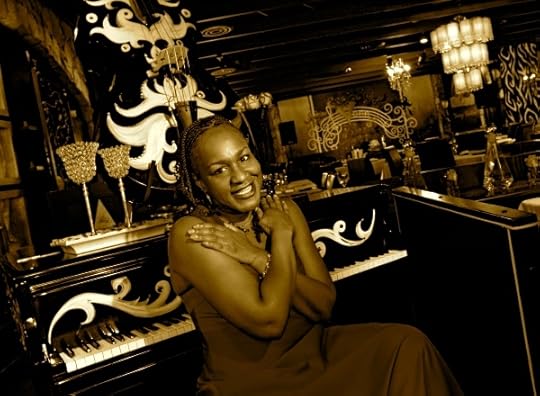 New music from Dr. E aka Elaine Richardson her forthcoming project SongsForTheStruggle. Song co-written and produced by Sam Haygood and Dr. E; Video by Dr. Bettina Love.
New music from Dr. E aka Elaine Richardson her forthcoming project SongsForTheStruggle. Song co-written and produced by Sam Haygood and Dr. E; Video by Dr. Bettina Love.
Published on July 09, 2015 16:34
How to Read a [Black] Book: A Primer
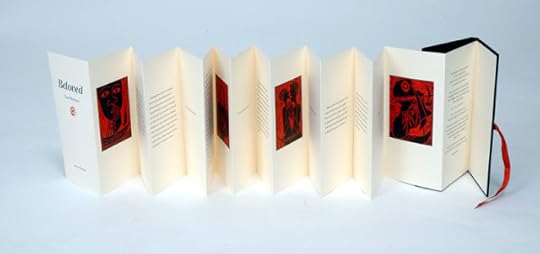 How to Read a [Black] Book: A Primerby Linda Chavers | @DrChavers | special to NewBlackMan (in Exile)
How to Read a [Black] Book: A Primerby Linda Chavers | @DrChavers | special to NewBlackMan (in Exile)This is a primer for teachers and students on why and how to read literature; and why this is an important – indeed, vital – skill to have and to hone in all walks of life. It is irrelevant to the humanities and to the sciences, it is critical and inherent to how to think.
When you read a book learn the whole object first. In order to do so one must have the physical book. For most literature, if at all possible, it is best to physically hold the words in your hands as they were shaped by the author. The book as an object is the place you are allowed concern for authorial intent -- because (without getting into the business of publishing) what you are holding is both an object and a subject of desire.
Pause and consider this: in your hands is a human being's artistic passion. It is a desire and catharsis embodied into an object you now hold. Each pagination, each lettering, every kern. As you read be sure to honor this fact and its presence in your hands.
Sensation is integral to the readerly experience. When I think of Toni Morrison's Song of Solomon I don't see the colors yellow and brown but I feel them, along with the coarseness of the pages. A dark sense of oak comes up and a deep solitude. I hear Milkman cry to Guitar that "[i]f you surrender to the air, you could ride it" and I see myself at 16 years old in a pink bedroom crying. Reading is an organic process in which the words and the language and the stories become a part of you and I teach literature as something to be entered into as such. When you open the book, when you turn a page you are walking into someone else’s air.
When reading what is now called difficult literature (it's always important to ask, "...difficult for whom?") many of my students will wall up and say they do not or cannot relate and don't know how. This is especially so whenever literature concerns the big O's: the Others known as race, gender and/or sexuality. Traditionally, literature involving the white race, the male gender and/or heteronormativity has not been as publicly deemed difficult. But that is for another essay.
If there are letters to be read, read them. Create meaning with them. This will inspire you to put your own words onto pages and read them to others. I read everything there is possible and have always done so. I am a black woman. When I read as a little black girl there was never a struggle to enter into the traditionally white canon I was privy to. But I had a huge personality and I'm not sure I'd have struggled to enter into anything. There are a lot of little girls like that. Who don't know their size until someone lords it over them how small they are. That is absolutely for another essay.
The absence of that struggle for me has helped me answer the frustrations of my students. The ones who immediately feel prevented from entering into or relating to or understanding the words of characters not like themselves. Or how to read in a syntax that's not what they are used to seeing. I also speak to the students who perhaps feel a premature kinship to the literature because at last they do sense some recognition on the page. Literature is never that easy. Seductive, yes. Easy, no. Trust me.
Literature, particularly fiction, is about the human condition. And the best works do not transcend those big Os (never that, such a suggestion is insulting) but, rather they embrace them even and, especially, when the Other presence is seemingly not there.
It's why so many black writers, myself included, are diehard Faulknerians. I didn't read Faulkner until I was 19 during my sophomore year in college. It was his most difficult text: not The Sound and The Fury, his most celebrated novel and one I find lacking and much more typical in racist tropes, but Absalom. Absalom! When Charles Bon describes the not-whores of New Orleans I felt inspired to write about the women in my family and the black narrative -- how our beauty is in direct correlation with our massacre. Near the end of the novel when Bon (as imagined by two other characters -- told you, literature is seductive) tells Henry Sutpen, "I'm not [your brother], I'm the nigger who's going to sleep with your sister unless you stop me"
I still find that passage to be one of the most fascinating and earth-shattering in the North American literary canon. Because what is that if not subversive double-speak? What is that if not the most definitive representation of our American tension around race, especially since November 2008? Is he our past or our future?
I tell my students to treat the literature they read as alive. Something to constantly grapple with as much as they grapple with their own growing bodies and minds.
There is nothing without context and there is nothing outside context (I'm also a Derridean). But I believe in the overlapping of everything. I have to believe these things this way or I'll have no excuse for my high amount of pop consumerism. I'll have no explanation for why I see no problem paralleling Jay Z's "I'm not a businessman, I'm a business, man!" with Bigger Thomas's "But what I killed for, I am!" or why I'd argue that his version of "99 Problems" is a radical, misogynistic, Lacanian love song about the choice to be alone.
I tell my students literature is alive and well because when I watch television and come across a scene in which a white President taunts a black father about performing cunnilingus on his daughter I just know Shonda Rhimes was a Faulkner devotee in her Dartmouth days.
Or, because when Ferguson and Baltimore burned I thought of Salman Rushdie's line "Humiliate a people long enough and a wildness bursts out of them" in his too-oft ignored, aptly named novel Shame.
Read this way for the rest of your life but do so aggressively for a year at least. Be sure to copy those passages that strike you, especially the ones that strike you for reasons you cannot articulate beyond saying that it’s “interesting.”
Then, ban “interesting” from your vocabulary and get started on how to describe the indescribable.
Step one, how to avoid the passive voice: owning it.
+++
Linda Chavers holds a PhD in African American literature. She loves television and teaching and she writes about a lot of things that get on her nerves. Follow her on Twitter at @DrChavers.
Published on July 09, 2015 16:13
Adam Mansbach on the Inherent Whiteness of Resisting the Realities of Racism
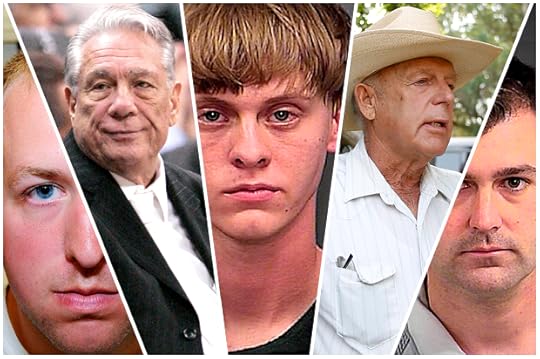 Adam Mansbach on the Inherent Whiteness of Resisting the Realities of RacismReprinted by permission of the author | NewBlackMan (in Exile)
Adam Mansbach on the Inherent Whiteness of Resisting the Realities of RacismReprinted by permission of the author | NewBlackMan (in Exile)One of the pleasures of getting older and making a living the way you want to is that your social circle becomes rarified and the people who enter have been vetted. When I was in my twenties, shady-ass characters routinely found their way into my life and my apartment. With some regularity, friends revealed themselves as liars, or misogynists, or big Master P fans, and I stopped seeing them.
Nowadays, that never happens. My whole crew is rock-solid, and anybody I meet through any of them comes pre-certified; I might not love them, but I can take for granted that they aren’t going to ransack my house or pop some foul shit.
A related fact is that I don’t really hang out with that many white people these days. Not for a white person, anyway. And those I do hang out with tend to be (1) predominantly Jewish but totally secular, (2) hip-hop heads and practitioners since Bushwick Bill had depth perception, and (3) decades deep in their critical analysis of white privilege and structural racism, which was a process that was not optional if you were a white hip-hop kid growing up in the era of Brand Nubian and X-Clan and Boogie Down Productions. You probably know some of these people if you’re reading this, because they’re all writers and artists and musicians – Danny Hoch, Kevin Coval, Joe Schloss, J. Period, Dan Charnas, Blake Lethem, Jon Shecter. That type of dude.
This is a miniscule cohort, invisible on the national radar, but for all intents and purposes it’s the sum total of my white community. I don’t know any of the white people who keep showing up in all those incredibly depressing studies and statistics—the ones that reveal a typical white person’s “real life social network” is 1% black, or that a majority of whites in this country believe “anti-white bias” is a bigger problem than racism, or that less than half of whites believe the grand juries should have indicted the killer cops in Ferguson or Staten Island, or that Barack Obama lost the white vote in both 2008 and 2012.
I didn’t look any of that up just now; I keep facts like this handy because I’m a dude who speaks about race and whiteness and politics in public sometimes and I like to stay strapped. But I’ve constructed a life and a career that keeps me completely isolated from those white people—“real” white people. I don’t even have awkward Thanksgiving conversations with some crotchety old-fuck uncle who thinks the president is a secret Muslim.
I did, however, become single and start dating last summer, for the first time since Bill Clinton was in office. I met a girl I really liked. I’ll call her Jessie. She was gorgeous, she was smart, and she liked to talk shit. She lived in Queens but I met her at a literary festival in Jamaica. We watched Prodigy from Mobb Deep get bumrushed onstage by a drunken local whom the crowd liked more, and then we stayed up all night, blah blah blah. It didn’t occur to me, not for one second, that her politics or her race consciousness or whatever might be different than mine, because I had met her. Even though she was from a tiny town in Oregon and had grown up in a mega-Christian family. After all, she’d renounced that shit and moved to New York and she liked me.
Then Mike Brown got murdered and Jessie couldn’t understand the rush to condemn Darren Wilson. This wasn’t part of a pandemic of police violence against black men to her; these were individuals and we didn’t know what had happened and we shouldn’t make assumptions and most cops weren’t necessarily racist, most cops just reacted to the situations they were in, the experiences they’d had, and if those experiences led them to assume that black men should be treated as threats, who were we to question that? She’d served two weeks on a grand jury and all the gun case defendants had been black, and what did that tell you? Those were facts. She’d been there.
We almost broke up that night. I stood on the street outside her crib, an incredibly heavy duffel bag on my shoulder, and argued my motherfucking ass off for two and half hours. I happen to be really good at arguing, for reasons I’m not necessarily proud of, reasons that date back to early childhood and contributed heavily to my nascent singleness. Though being really good at arguing is also how I got through high school and college without studying that much. Marshaling some shit KRS-ONE said in a song and using it to bludgeon a history teacher was my basic educational modus operandi for about six years.
I told Jessie she was ignoring the empirical in favor of the anecdotal, and what a fraught and dangerous path that was. I tried to get her to understand how intensely personal this was for me, how unjust policing and trials and sentencing had destroyed friends’ lives and compromised our entire generation. We did history and anthropology and philosophy. It was heated and intense and the angrier I get the better I argue. Eventually I felt good enough about where we’d gotten, the progress we’d made, to go upstairs and sleep with her.
But it wasn’t really okay. We kept talking about it. Jessie admitted that she’d never really grappled with this shit, and expressed a beautifully sincere desire to try. Pretty soon she was telling her father on the phone about the endemic racism of the police, and getting excited about engaging all the white people she knew back home—the kind she’d been herself a few weeks earlier. She felt like she knew how to get through to them, how to create empathy and understanding and break down fear and hatred.
The thing was, her impulses were still her impulses; her frame was still her frame. Even now that she was righteously indignant and eager to proselytize, every discussion began with her eliding the ubiquity of structural racism, refusing to see how it undergirded whatever situation we were parsing. She focused on anything and everything else, with a fervor I knew all too well, and I’d bombard her with statistics, or point out that the very categories she chose to create were grounded in the normalization of whiteness. Or I’d have to create elaborate hypothetical scenarios to illustrate the limitations of, say, a black person’s ability to prevent himself from being profiled by police. She hadn’t read anything. She didn’t know who Emmett Till was. Or James Baldwin. She listened to a lot of hip-hop, but—and I can’t believe I’m saying this—that means nothing in 2014.
I felt confused and compromised, being with her. On one hand, I was introducing Jessie to all this radical race shit (radical only on the spectrum of white American politics, but still) and seeing her get a decent amount of it—even if the process wore me out. On the other hand, I was with somebody who didn’t get radical race shit, somebody who never would have made her way past the gatekeepers and into my little precious elitist smartypants cool white kid circles. And on the third hand, I had become (as my friend Sheila Heti writes) one of those insufferable men who want to teach a woman something.
Jessie kept telling me how much good I could do by talking to the kind of people she grew up with, and I kept saying I wasn’t interested in chopping it up with any hunkered-down white racists, that I’d had my fill of that ten years earlier when I published Angry Black White Boy. She kept being disappointed in my refusal, my weariness, my cynicism in thinking those people wouldn’t change based on anything I said, my arrogance in acting like I had better shit to do.It was a summer of fucking and civic unrest, and of thinking about 1981. I was researching Obama’s time at Columbia University for a screenplay I’d been hired to write, reading everything I could get my hands on about that relatively opaque and unsettled period of his life.
One of the jewels— the kind of line you can’t even use, because it’s too on-the-nose—was that his white girlfriend, Genevieve Cook, had broken up with young Barry by telling him that what he needed was a “strong black woman.” There was a strange duality for me, in watching the strained, embattled man calling for calm on my television screen—the soon-to-be lame duck president whose tenure, whose very being, had kicked the hornets’ nest of American racism far harder than any of us had come close to anticipating—and trying to project myself backward in time and understand who Obama had been when he was only slightly older than Mike Brown.
Jessie and I never really recovered from that first Ferguson fight, but I kept trying to make it work, for good reasons and bad. Fall rolled around, and my schedule of gigs picked up. She’d fly out and meet me in various cities and we’d spend a few days together and I’d tell myself it was probably the last time and I should enjoy the parts that were enjoyable.
In one of those cities, we ended up going to a bar with another woman, somebody I didn’t know well but had known not-well for years. She was Puerto Rican, from New York. The two of them hit it off at first, but then I started to notice that actually, New York was probing and testing and fucking with Jessie in all these slick, subtle, devastating ways that Jessie didn’t notice and that I appreciated far more than I should have.
After two rounds of bourbon I went to the bathroom. I returned to a full-blown shitstorm. New York had tried to buy Jessie a shot, and Jessie had declined because she’d already had enough to drink. New York tried to buy it anyway, but the bartender, a white dude, wouldn’t let her. New York got on some “Oh, a brown woman can’t buy a drink? My money’s no good here?” type shit, and Jessie took it at face value and tried to explain to her that the bartender was not legally allowed to sell a drink if the person the drink was intended for expressed unwillingness to imbibe it.
I walked back into the room just in time to hear Jessie say, with deep conviction and obvious frustration, “It’s not about race!”
They both looked at me like I was that dude Paris and they were the goddesses laying claim to the golden apple that started the Trojan War. I had no idea what had happened while I was taking a piss, but I said, “It’s never a good look to be the white girl claiming it’s not about race.”Fast forward to three in the morning, the two of us lying in a hotel bed, half-drunk, Jessie railing against New York for trying to make it about race when it clearly was not, when there was no way her race had anything to do with that bartender doing his job and it is unforgiveable that she pulled that bullshit and you didn’t take my side.
I listened until she had nothing more to say, and then I took a deep breath and told her that race always has something to do with it. That even if the bartender wasn’t consciously acting based on the color of New York’s skin, that didn’t mean she hadn’t experienced a long day, a long week, a long lifetime of interactions, slights, injustices, assumptions predicated on how she looked. That neither Jessie nor I nor the bartender himself was in a position to say whether this had indeed been one of them, or why it felt like it to New York, or whether she was wrong. That the very essence of white privilege was getting to walk around unraced, never assuming that/wondering if/fretting over whether the color of your skin was going to determine your fate. And that ironically, Jessie’s own skin did just that, but in ways she never had to notice, just as a bicyclist doesn’t notice the wind at her back, speeding her along.
So she’s always going to be right and I’m always going to be wrong, Jessie said. The facts don’t matter. I can never say anything.
I mumbled something like yeah, you’ve been silenced, it’s a real fucking injustice. I probably could have done better; I could have acknowledged that sometimes being white and not an asshole is tricky and will challenge your intuitive sense of fairness or equality or the value or your own opinion and that on the grand scale of problems all of that is ultimately fucking hilarious. That sometimes your opinion and perspective truly are less important, and asserting otherwise is an #AllLivesMatter-esque form of trolling, an attempt to level a playing field that’s already tilted in your direction, and such behavior could get you punched in the face if anybody had any energy for that shit, which they don’t because it’s so low on the list of things worth being irate about, such as the fact that black college graduates are less likely to be granted job interviews that white felons, or the fact that a police officer’s surest way to reap a six-figure financial windfall is to murder a black kid.
Just before we fell asleep, Jessie said, Why are you even with me? Why aren’t you with a black woman?
I don’t know if she realized she was paraphrasing Barry Obama’s college sweetheart; I’d certainly quoted the line that summer. But here were the parameters of Jessie’s racial self. The way I wanted her to see the world was irreconcilable with her conception of whiteness, and thus I must need a black woman.
Maybe we’d found my parameters as well. Maybe giving up, or letting her give up, meant I wasn’t trying hard enough. Watching the president on TV that summer, I found myself wondering if he’d given up, too.
And ultimately, the reason I’m writing all this anecdotal shit about Jessie and the conveniently smart-sounding shit I said to her (which sounds less smart to me now that I’m writing it down) is probably that I’ve got so few answers and things seem so desperate and retrograde out here right now. I mean, shit, the cops who beat Rodney King at least went to trial. Hell, the dudes who murdered Emmett Till went to trial, and that was half a century ago.
Mostly, I just want to sit white people down and say “Okay, so what WOULD convince you that racism is real, then?” But not really, because then I’d have to hear their answers.
I’d like to think that this particular moment—which seems like it must be to the next generation what the ’92 LA Riots were to mine—might eradicate the much-and deservedly-maligned White Liberal. That right now white people either have to double down on fear and denial, or they have to assess the facts before them and be radicalized by the clear evidence that a tremendous gulf exists in this country between black and white, a gulf maintained through institutionalized violence. But I don’t think I believe it. I have no evidence to suggest that it’s the case. And I sure as fuck do not have my fingers on the pulse of white America. If I did, I would squeeze.
I had lunch last week with Jeff Chang, fresh off his book tour for Who We Be: The Colorization of America, and we talked about this: the feeling of having no answers, of hitting middle age and looking back on two or three decades of artsy activism or activist artistry only to throw up our hands and hope things will improve once our parents’ generation, with its high voter turnout, dies off. We were eating burritos served by a six-year-old waiter, and as we watched the kid scamper back to the kitchen, Jeff said that the big question is what to tell white people, as they march inexorably toward minority status, 2042, all that shit.
He said he’s pretty sure the old answer, “go work in your own communities and organize your own people,” doesn’t make that much sense any more. I think he’s right; the white people who might want to do that don’t feel invested in those communities. They escaped them for some bastion of multiculturalism, or they have no idea what a white community even is, because if a community is an outgrowth of a culture, then you have to figure out what white culture is, and nobody wants to touch that except the bozos on Fox News screaming about taking back America, and people even worse than them. White identity doesn’t appeal to anybody on the left, except as something to complicate and dilute with ethnicity or politics or sexuality or class or anything else we can find, so as to feel marginally less complicit in a morally heinous system.
Sure, there are things white people can do to use that power, that privilege, for good: we can say shit about racism without fear of recrimination, say shit without being dismissed as speaking from some place of anger or narrow self-interest (though even better would be to explain why we are speaking from anger and narrow self-interest). We can stand between the cops and the little black kids, maybe. We can spend money, elect people, call for something besides grand juries to decide whether cops face trial. Is it enough? No. Have I got something better? Also no. Is this essay twice as long as it was supposed to be? Yes. So I guess I’m out of time.
+++
This essay is part of the “Shifting Perceptions: Being Black in America” series commissioned by the Perception Institute. The entire series can be viewed at www.perception.org
+++
Adam Mansbach is the author of the instant New York Times bestsellers Go the Fuck to Sleep and You Have to Fucking Eat, as well as the novels Rage is Back, Angry Black White Boy and The End of the Jews, winner of the California Book Award.
Published on July 09, 2015 07:16
July 8, 2015
Between the Lines: Mary Helen Washington and Farah Jasmine Griffin Discuss 'The Other Blacklist'
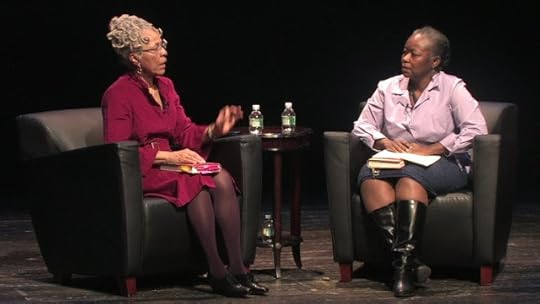 Farah Jasmine Griffin talks with Mary Helen Washington, author of
The Other Blacklist:
The African American Literary and Cultural Left of the 1950s
. The book explores the impact of the Left, the Communist Party, and the U.S. government spying operations on African American literature and culture during the Cold War. Focused on six major African American writers and artists of the 1950s, this study shows how their Left affiliations enabled them to shape an aesthetic that maintained traditions of race radicalism and literary experimentation.
Farah Jasmine Griffin talks with Mary Helen Washington, author of
The Other Blacklist:
The African American Literary and Cultural Left of the 1950s
. The book explores the impact of the Left, the Communist Party, and the U.S. government spying operations on African American literature and culture during the Cold War. Focused on six major African American writers and artists of the 1950s, this study shows how their Left affiliations enabled them to shape an aesthetic that maintained traditions of race radicalism and literary experimentation.
Published on July 08, 2015 21:20
Elizabeth Alexander & Hilton Als in Conversation at the New York Public Library
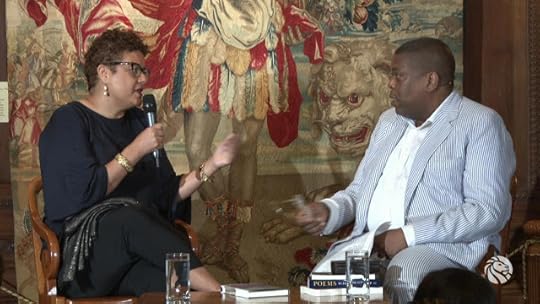 To mark the release of her elegiac memoir on love and loss,
The Light of the World
, poet and professor Elizabeth Alexander is joined by The New Yorker's Hilton Als in conversation.
To mark the release of her elegiac memoir on love and loss,
The Light of the World
, poet and professor Elizabeth Alexander is joined by The New Yorker's Hilton Als in conversation.
Published on July 08, 2015 20:48
"I don’t think that symbol deserves the dignity of debate" -- Bree Newsome on Democracy Now
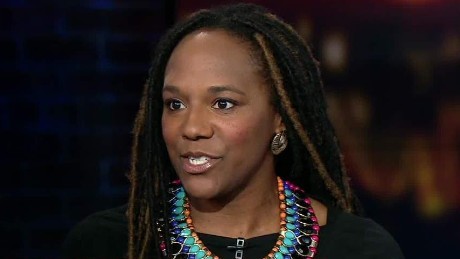 Activist and filmmaker Bree Newsome talks with Amy Goodman of Democracy Now about her taking down of the confederate flag at South Carolina State Capitol.
Activist and filmmaker Bree Newsome talks with Amy Goodman of Democracy Now about her taking down of the confederate flag at South Carolina State Capitol.
Published on July 08, 2015 14:34
Put Down The Gun: An Interview with Civil Rights Activist Rev. James Lawson
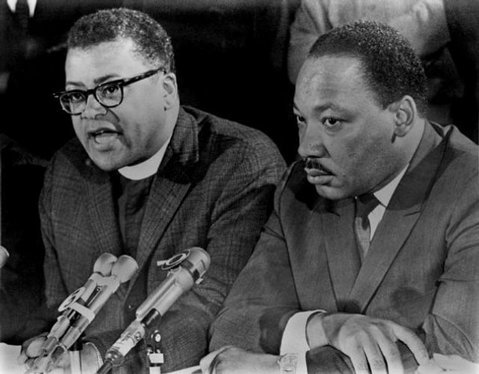 Put Down The Gun: An Interview with Civil Rights Activist Rev. James Lawsonby Charles Bane, Jr. | special to NewBlackMan (in Exile)
Put Down The Gun: An Interview with Civil Rights Activist Rev. James Lawsonby Charles Bane, Jr. | special to NewBlackMan (in Exile)When history made its sculpture of Dr. Martin Luther King, Jr., it unwittingly cast aside shards of hundred of important lives that contributed to the artwork: Rev. Fred Shuttlesworth set his fierce courage against the grim features of Bull Connor. Freedom Rider John Lewis routinely washed blood from his clothes. Mamie Till Mobely had sacrificed her only child.
Martin Luther King , Jr. was a consummate strategist: he had to be: lives depended on it. So perhaps it was a young minister, James Lawson, who presented to the civil rights movement its finest gift--Lawson's personal encounter with non--violence in India. King gazed at the gift as if under a lens: a new world jumped to life.
CB: When did you first travel to India?
Rev. Lawson: In 1953. I had originally signed up for a three year term to teach, under a program offered by the bishop of my church. I wanted to take a Christian path. I wanted to live in a different setting and see what Jesus would mean to me in the context of other cultures. But the F.B.I. arrested me in 1950 for resisting the draft, a "felony against the draft act." I went to jail for 13 months.But I stayed in touch with the Church Board about teaching and finally went as a missionary.
Gandhi was a major teacher for me. I had read his autobiography, My Experiment With Truth in 1947 and I read the series of books that followed his death in 1948. I began to practice methods of non- violence in America in matters of race. I tested restaurants myself.
CB. When did your path cross with Dr. King's?
Rev. Lawson: In 1957 in Oberlin, Ohio. I had returned from India to Oberlin Graduate School of Divinity. He came to speak in February. There was a small lunch, so we had the chance to have a private conversation and come to know one another. It was...a common kinship and spirituality. He had a phenomenal commitment to liberation and justice for people of color, and the nation. In college, I had always said to myself that, one day, I wanted to work in the South, to help. I told him that, and he said, " Don't wait. Come now. We don't have anyone with your experience or skills. " He was referring to my ministry. I told him I'd get there as fast as I could.
CB: You began conducting workshops in non-violence.
Rev. Lawson: In February, 1958.S Some initial workshops in troubled places--Little Rock, Birmingham--and then in March we began a series of workshops in Nashville. Those workshops covered major issues of non- violence. Gandhian principles, issues of American history, role- playing. We wanted to prepare people to become the troops of non- violence. We invited them to infuse non- violence into their personal lives and we used the Montgomery bus boycott as an illustration of its potential for success and change. I was elected to the executive committee of the Nashville Christian Leadership Council and we were agreed we wanted to take action in Nashville. We decided to begin desegregating downtown Nashville in September.
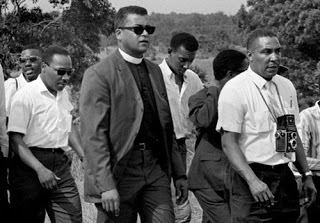 CB : Do you believe the workshops had a profound effect on the civil rights movement?
CB : Do you believe the workshops had a profound effect on the civil rights movement?Rev. Lawson: Yes. Almost anyone will say to you that the workshops had a critical effect on key organizers: C.T. Vivian, John Lewis, Marion Barry, in Selma, Mississippi and elsewhere. We all spent time in Mississippi jails. And it was critical to the Freedom Rides of 1961.
CB: You were a key organizer yourself in Birmingham. Was that a turning point?
Rev. Lawson: Birmingham brought one of the great breakthroughs: the Civil Rights Act, solidified by the Washington March. But people today have taken their eyes off a need for...redemption. America has yet to come to terms with race.
CB: How had Indian principles of non-violence become the foundation of Christian activism?
Rev. Lawson: Listen to me. King came from a Black church. So did I. Our non- violence began with Jesus.Gandhi himself said, when he read the Sermon On The Mount, "This is it." Many people back then pretended that non- violence wasn't a form of power. I didn't. In 1947, I'd discovered the pacifism that was secret in Christianity.
CB: You were chairman of the sanitation workers strike in Memphis in 1968?
Rev. Lawson: I was living there since 1962, pastor of a Memphis church. I was not at the Lorraine ( Motel ) at that hour. I had gone on to court. I visited with him that morning. We were preparing a march on April 5th. As I recall, I was on my way to court to stop the injunction. We had agreed the injunction would not stop us from marching on Friday. I was getting ready to eat supper with my wife, Dorothy and our children and the T.V. was on. I ...choked up immediately. I said, ' I have to go make certain we're going to march. I have to make certain we all stay calm.' I went on the radio at a Black station and spoke for calm. I said, ' Come to Clayburn Temple AME Church to carry on the march'. We didn't yet know he was dead. I said, ' If you loved DR. King, we know he would expect us to do this.' There was a ticker tape right at the station, so the news came directly from St. Francis Hospital. I went back on the air and spoke again for calm . Other places burned, but not Memphis.
CB: You're continuing , in retirement, to conduct non- violence workshop?
Rev. Lawson: I'm doing workshops with high school students. The problem isn't kids, it's adults. It's the government. If given the chance to to look for truth and justice, young people are the first to opt for it.
CB: What does the principle of non- violence represent to you?
Rev. Lawson: It's the unheralded but heroic option of the human race.Put down the gun. Pick up better ways to make ourselves better people. It is the 'either / or ' crossroads for this country. King said: ' It is either non-violence or non-existence.'
+++Charles Bane, Jr. is a second generation civil rights activist and author of The Chapbook ( Curbside Splendor ) , Love Poems ( Aldrich Press) , and Three Seasons: Writing Donald Hall ( Collection of Houghton Library, Harvard University ). He created and contributes to The Meaning Of Poetry series for The Gutenberg Project, and is a current nominee as Poet Laureate of Florida.
Published on July 08, 2015 14:22
"The Other Girls" Presents 'Black Women in the Media'
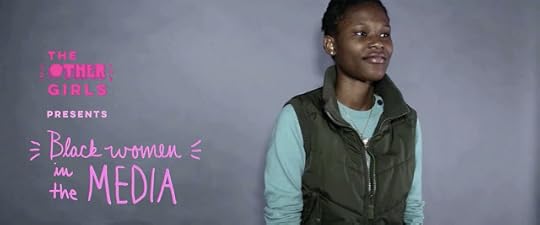 A film short from
Charity Ekpo
based on her project The Other Girls, which examines "the misrepresentation/ under representation of black women in the media. The goal of this project is to not only educate and empower young black women but also create a much more positive and empowering perception of black women in the media." Black women in the Media from Charity Ekpo on Vimeo.Director of photography: Will Ekpo
A film short from
Charity Ekpo
based on her project The Other Girls, which examines "the misrepresentation/ under representation of black women in the media. The goal of this project is to not only educate and empower young black women but also create a much more positive and empowering perception of black women in the media." Black women in the Media from Charity Ekpo on Vimeo.Director of photography: Will EkpoProduced, Edited and Directed by: Charity Ekpo
Music: "House of Dreams" by Naomi Pilgrim
Published on July 08, 2015 08:19
"Flawed Beautiful Creature"--Stacy Barthe's Story Of Near-Death And Rebirth
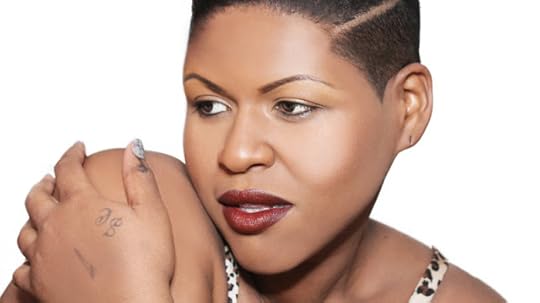 'At 25, Stacy Barthe was already writing songs for pop stars, but life outside the studio felt like a battlefield. Barthe speaks with NPR's Arun Rath about the hard road to her full-length debut BEcoming'.
'At 25, Stacy Barthe was already writing songs for pop stars, but life outside the studio felt like a battlefield. Barthe speaks with NPR's Arun Rath about the hard road to her full-length debut BEcoming'.
Published on July 08, 2015 08:01
July 7, 2015
NBAF Symposium: “Dance Across the Diaspora--A Historical Lens on a Black Cultural Movement”
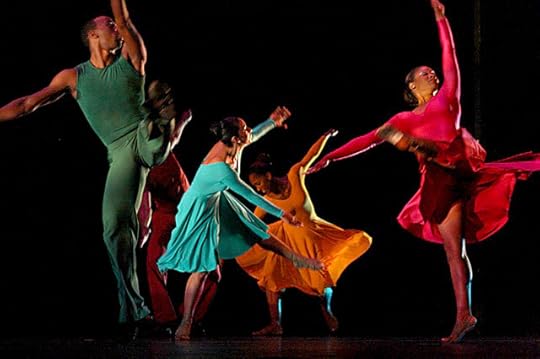 NBAF Symposium“Dance Across the Diaspora: A Historical Lens on a Black Cultural Movement”Saturday, July 18, 9 a.m. to 5 p.m.
NBAF Symposium“Dance Across the Diaspora: A Historical Lens on a Black Cultural Movement”Saturday, July 18, 9 a.m. to 5 p.m.Atlanta, Georgia (July 7, 2015) – To inaugurate its stunning 2015 season, the National Black Arts Festival (NBAF) presents the all-day Symposium “Dance Across the Diaspora: A Historical Lens on a Black Cultural Movement” on Saturday, July 18 at the High Museum of Art. Through discussion, presentation and participatory offerings, local, national and international dance experts, scholars and performers including tap master Savion Glover explore the national and global impact and the history, traditions and rich variety of dance forms that emerged from the 18th century to the present.
Developed and moderated by Professor Thomas F. DeFrantz, a dance historian and scholar at Duke University and author of several publications on black dance including Dancing Many Drums: Excavations in African American Dance (2002) and Dancing Revelations: Alvin Ailey’s Embodiment of African American Culture (2004), the symposium considers the extraordinary contributions of trailblazing dancers and choreographers who sustained, challenged and transformed many of the forms while establishing new genres and styles over the centuries.
Presented in partnership with the High Museum of Art, the symposium includes participants: moderator, Professor Thomas F. DeFrantz; Yvonne Daniel, Professor Emerita, Smith College (speaking on Afro-Caribbean sacred dance); Halifu Osumare, Professor, African American and African Studies, University of California at Davis (speaking on historical forms of Black social dance); T. Lang, founder/choreographer T. Lang Dance, Assistant Professor, Spelman College (speaking on the creative craft of a new work titled Post Up); John Perpener, dance historian and independent scholar (speaking on dance iconoclast Eleo Pomare); Nena Gilreath and Waverly T. Lucas II, co-founding directors/dancers and choreographers (presenting a lecture-demonstration detailing their 25-year blend of dance forms); A’Keitha Carey, independent artist (teaching a CaribFunk dance workshop); Storyboard P, independent artist and international celebrity in Street Dance (demonstrating his signature dance method) and Onye Ozuzu, Chair and Dean, Columbia College Chicago (teaching a group improvisation workshop “Technology of the Circle”).
“We deeply appreciate the partnership with the High Museum, which has been in place over the years, and that continues this season with the particular generosity of the museum in offering the Hill Auditorium as the venue as well as free admission to symposium attendees,” said NBAF executive director Grace C. Stanislaus.
“Dance Across the Diaspora” emphasizes audience participation, engagement and interactivity through conversation and exchange as well as dance demonstrations of old social, modern and contemporary street-derived forms. Participation is encouraged!
Tickets: $75 (includes free admission to the High Museum and master class with Savion Glover), $20 Students
Location: High Museum of Art1280 Peachtree Street, Atlanta
About the National Black Arts FestivalThe National Black Arts Festival (NBAF) is a nonprofit organization with a 27-year legacy of providing stellar artistic and educational programs in music, dance, film, visual arts, theater and literary arts. Celebrated within and outside of Atlanta, NBAF is recognized as the oldest multidisciplinary arts organization in the United States focused exclusively on the arts and on artists of African descent.NBAF is supported by the City of Atlanta, the Fulton County Arts Council and by local and national government funders, corporations, foundations, businesses and individuals. www.nbaf.org
Published on July 07, 2015 20:42
Mark Anthony Neal's Blog
- Mark Anthony Neal's profile
- 30 followers
Mark Anthony Neal isn't a Goodreads Author
(yet),
but they
do have a blog,
so here are some recent posts imported from
their feed.



